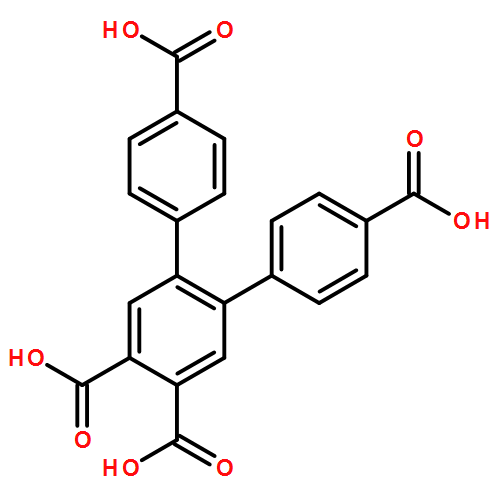Co-reporter: Liming Fan, Yan Gao, Guangzeng Liu, Weiliu Fan, Weikuo Song, Liming Sun, Xian Zhao and Xiutang Zhang
pp: 7649-7659
Publication Date(Web):02 Jun 2014
DOI: 10.1039/C4CE00760C
Six 4,5-di(4′-carboxylphenyl)phthalic acid (H4DCP) based coordination polymers (CPs), namely {[Ni(1,4-bib)(HDCP)2(H2O)2]0.5[Ni(1,4-bib)(H2O)4]·2H2O}n (1), [Ni(H2DCP)(1,4-bidb)2(H2O)]n (2), [Co2(DCP)(1,3-bib)]n (3), {[Co2(DCP)(1,4-bidb)2]·2H2O}n (4), [Co(H2DCP)(4,4′-bibp)]n (5), and [Co2(DCP)(4,4′-bibp)2]n (6), were synthesized under hydrothermal conditions in the presence of bis(imidazole) bridging linkers (1,3-bib = 1,3-bis(imidazol-1-yl)benzene, 1,4-bib = 1,4-bis(imidazol-1-yl)benzene, 1,4-bidb = 1,4-bis(imidazol-1-yl)-2,5-dimethyl benzene, 4,4′-bibp = 4,4′-bis(imidazol-1-yl)biphenyl). Their structures have been determined by single-crystal X-ray diffraction analysis and further characterized by elemental analysis, IR spectra, powder X-ray diffraction (PXRD), and thermogravimetric (TG) analysis. Single crystal X-ray diffraction analysis reveals that complex 1 is a cocrystal consisting of two independent chains. Complex 2 exhibits a traditional 2-fold 66-dia parallel entangled network. Complex 3 displays a novel 3D binodal (5,7)-connected net based on binuclear {Co2} units with the Schläfli symbol (3·44·54·6)(32·48·58·63). Complex 4 shows a 2-fold binodal (4,4)-connected bbf net with the point symbol (64·86)(66)2. Complex 5 affords a 2D (44·62)-sql net constructed from {Co2} dinuclear units. Complex 6 displays a novel (3,8)-connected architecture with the Schläfli point symbol (42·5)2(44·510·68·74·82) based on {Co4(COO)6} SBUs. Magnetic studies indicate complexes 3 and 6 exhibit weak ferromagnetic and antiferromagnetic properties, respectively.
